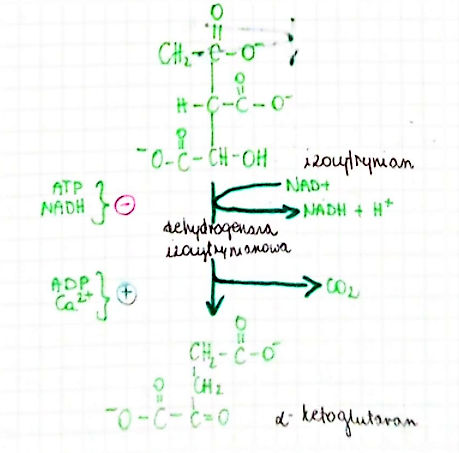Krebs cycle? Not that scary 24th June 2024 – Tags: Biochemistry, Krebs, Krebs cycle, science studies, TCA
Welcome to the second article about Krebs cycle addressed to students. At Gentaur, it is important for us to, in addition to selling diagnostic products, also educate others. The articles will mainly cover biochemical issues. It is possible that texts related to other subjects will also appear later. Together we will discover that biochemistry is not as scary as it seems.
What is the Krebs cycle?
This cycle is the final pathway in which carbohydrates, amino acids and fatty acid derivatives are oxidized, thanks to which their carbon skeletons are converted to carbon dioxide. This oxidation process provides energy for the production of ATP. This cycle is an aerobic pathway because oxygen is necessary in this process as the final electron acceptor. This cycle occurs in mitochondria adjacent to the electron transport chain. This cycle also provides substances for other metabolic reactions, e.g. glucose production, amino acid synthesis and heme synthesis. It is also a source of NADH and FADH2 for the respiratory chain.

Stages of the Krebs Cycle:
Production of acetyl-CoA
The main source of this compound is the oxidative decarboxylation of pyruvate, which is catalyzed by the pyruvate dehydrogenase complex. It consists of three enzymes: pyruvate decarboxylase, dihydrolipoate acetyltransferase and dihydrolipoate dehydrogenase. Pyruvate is transported from the cytosol to the mitochondrial matrix using the pyruvate transporter. In the matrix, the pyruvate dehydrogenase complex converts pyruvate to acetyl-CoA.

Citrate synthesis
The synthesis of this compound involves the irreversible condensation of acetyl-CoA with oxaloacetate. This reaction is catalyzed by citrate synthase. This reaction is characterized by a very negative change in the standard free energy.

Citrate isomerization
Then, in the Krebs cycle, citrate isomerized to isocitrate as a result of transfer of the hydroxyl group. The reaction is catalyzed by aconitase – aconitan hydratase.

Oxidative decarboxylation of isocitrate
This reaction is catalysed by isocitrate dehydrogenase. This reaction produces α-ketoglutarate. Also during this reaction, the first of the three NADH molecules produced in the cycle and the first carbon dioxide molecule are produced.

Oxidative decarboxylation of α-ketoglutarate
This is an irreversible process catalyzed by the α-ketoglutarate dehydrogenase complex. This reaction produces succinyl-CoA. This reaction also produces a second molecule of NADH and carbon dioxide. To carry out this reaction, coenzymes are needed such as: TPP, lipoic acid, FAD, NAD+ and CoA. This reaction can be compared to the reaction of producing acetyl-CoA.

Cleavage of succinyl-CoA
This reaction is catalysed by thiokinase succinate. It breaks the high-energy thioester bond in succinyl-CoA. Phosphorylation of guanosine diphosphate (GDP) to guanosine triphosphate (GTP) also occurs during this reaction. This reaction produces succinate.

Oxidation of succinate
The succinate is then oxidized to fumarate. This reaction is catalyzed by succinate dehydrogenase. During this reaction, the FAD coenzyme is reduced to FADH2.

Hydration of fumarate
The hydration reaction of fumarate is easily reversible. It is catalyzed by fumarase – fumarate hydratase. This reaction produces malate.

Oxidation of malate
During the final reaction of the Krebs cycle, malate is oxidized to oxaloacetate. The reaction is catalyzed by malate dehydrogenase. During this reaction, a third molecule of NADH is produced.




